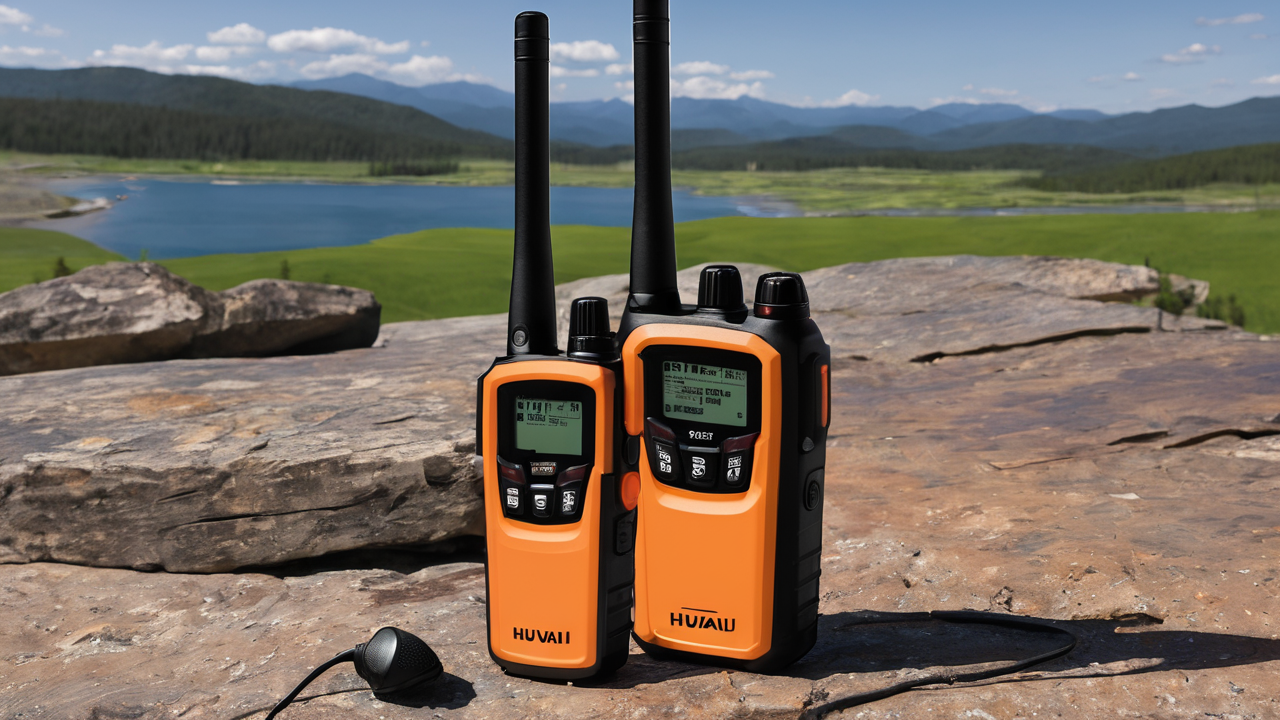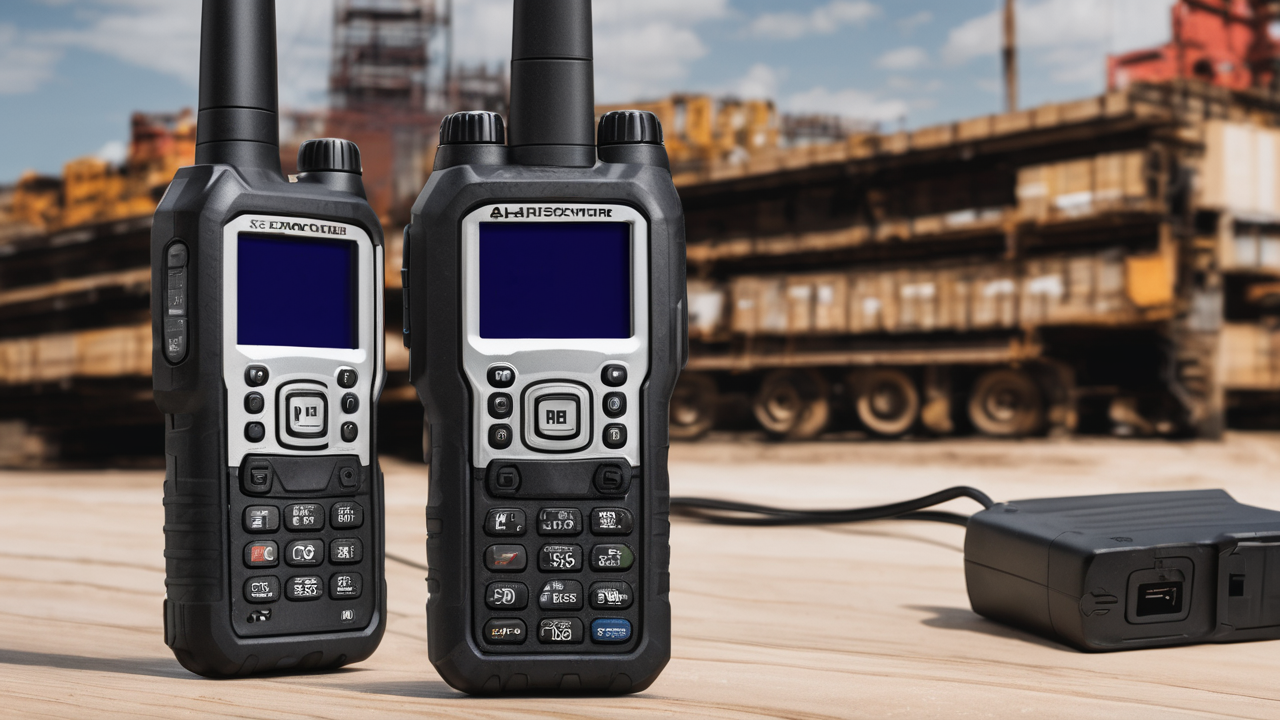Understanding the Long Range Walkie Talkie Market
The Need for Long Range Communication in the United States
In a vast country like the USA, reliable long-range communication is crucial. From emergency services to outdoor enthusiasts, many need to stay connected across great distances. Long range walkie talkies fill this gap, offering a dependable solution where cell phones falter. They're vital in remote areas, during natural disasters, and for coordinating large-scale events. These devices ensure safety and efficiency in various scenarios, from search and rescue operations to managing extensive agricultural lands.

Key Features to Look for in Long Range Walkie Talkies
When choosing long range walkie talkies, several features are essential:
- Range: Look for devices that offer 50-100 miles in ideal conditions.
- Battery Life: Opt for models with long-lasting batteries or rechargeable options.
- Durability: Choose water-resistant and shock-proof designs for outdoor use.
- Channel Options: More channels mean less interference in crowded areas.
- Privacy Codes: These help maintain secure communications.
- Weather Alerts: Built-in NOAA weather channels are crucial for safety.
- VOX Function: Hands-free operation can be invaluable in certain situations.
- GPS Capabilities: Some advanced models offer location tracking and sharing.
Regulations and Standards for Long Range Devices
In the US, the FCC regulates radio communications. For long range walkie talkies, key points include:
- License Requirements: Some high-power devices may need an FCC license.
- Frequency Bands: Different bands have varying rules and range capabilities.
- Power Limits: The FCC sets maximum output power for different device types.
- Emergency Channels: Certain frequencies are reserved for emergency use.
- Privacy: Be aware that communications aren't entirely private on these devices.
Always check current regulations before purchasing or using long range walkie talkies.
Top Long Range Walkie Talkies in the Market
Best Long Range Walkie Talkies for Emergency Services
Emergency services require reliable, durable, and long-range communication devices. Top picks include:
- Motorola APX NEXT: Offers advanced features and exceptional range.
- Harris XL-200P: Known for its rugged design and clear audio.
- Kenwood NX-5000 Series: Provides multi-protocol support and wide coverage.
These models boast features like:
- Extended battery life for long operations
- Water and dust resistance for harsh conditions
- Advanced encryption for secure communications
- GPS tracking for team coordination
- Interoperability with other emergency communication systems
Top Picks for Hobbyists and Outdoor Enthusiasts
For outdoor adventures and hobby use, consider these options:
- Midland GXT1000VP4: Offers up to 36-mile range and 50 channels.
- Cobra RX680: Features a range of up to 38 miles and NOAA weather alerts.
- BaoFeng UV-5R: Popular for its affordability and programmability.
These models typically offer:
- Compact and lightweight design for easy carrying
- Weather-resistant construction for outdoor use
- Multiple channels and privacy codes
- SOS features for emergencies
- Rechargeable batteries with long life
Business and Professional Solutions: Long Range Walkie Talkies
For business and professional use, reliability and range are key. Top choices include:
- Motorola XPR7550e: Offers digital and analog modes with excellent range.
- Hytera PD982: Features long battery life and advanced digital capabilities.
- Kenwood TK-3360: Known for its rugged build and clear communication.
These professional-grade devices often provide:
- Enhanced audio quality for noisy environments
- Longer range capabilities for large work sites
- Advanced safety features like lone worker alerts
- Integration with existing communication systems
- Customizable options for specific industry needs
Evaluating Long Range Walkie Talkies
Performance Testing: Range, Reliability, and Battery Life
When testing long range walkie talkies, focus on these key aspects:

Range: Test in various environments - urban, rural, and mixed terrain. Note that actual range often differs from advertised range due to obstacles and interference.
Reliability: Check for clear audio and consistent connection. Test in different weather conditions and at different times of day.
Battery Life: Measure how long the device lasts under normal use and in standby mode. Consider how quickly it recharges.
Also evaluate:
- Ease of use and interface intuitiveness
- Durability through drop tests and water exposure
- Clarity of transmissions in noisy environments
Remember, real-world performance may vary from lab tests.
Cost-Benefit Analysis: Investing in Quality
When considering long range walkie talkies, balance cost against features and quality:
- Initial Cost: Higher-end models are pricier but often offer better range and features.
- Long-term Value: Durability and reliability can offset higher upfront costs.
- Feature Set: Assess which features you'll actually use to avoid overpaying.
- Maintenance Costs: Consider battery replacement and potential repair needs.
- Scalability: For businesses, think about future expansion needs.
Compare total ownership costs over several years, not just purchase price. Quality devices often prove more economical in the long run, especially for frequent or critical use.
User Experiences and Customer Support
User feedback is crucial when evaluating long range walkie talkies:
- Read reviews from various sources, focusing on long-term use experiences.
- Check forums and community discussions for real-world insights.
- Look for patterns in complaints or praise across multiple users.
Assess customer support quality:
- Availability of technical support (phone, email, chat)
- Warranty terms and service options
- Responsiveness to customer queries and issues
- Availability of firmware updates and feature improvements
Good customer support can greatly enhance the value and lifespan of your device.
The Future of Long Range Walkie Talkies
Technological Advancements in Radio Technology
The future of long range walkie talkies looks promising with several advancements:

- Software-Defined Radios (SDR): Allowing more flexible and upgradable devices.
- Improved Battery Technology: Longer life and faster charging capabilities.
- Enhanced Digital Modes: Clearer audio and more efficient use of bandwidth.
- Integration with Smartphones: Apps for extended functionality and control.
- Mesh Networking: Devices creating their own network for extended range.
- Satellite Connectivity: Some models may offer global coverage through satellites.
These advancements aim to increase range, clarity, and functionality while maintaining ease of use.
The Role of AI and Machine Learning
AI and machine learning are set to revolutionize long range walkie talkies:
- Intelligent Noise Reduction: AI could dramatically improve audio quality in noisy environments.
- Predictive Maintenance: ML algorithms could alert users to potential device issues before they occur.
- Automated Channel Selection: AI could choose the best frequencies based on current conditions.
- Voice Recognition: Enhanced security and user-specific settings through voice ID.
- Intelligent Power Management: ML could optimize battery usage based on usage patterns.
- Adaptive Range Optimization: AI could adjust transmission power based on distance and obstacles.
These features could make devices smarter, more efficient, and easier to use.
Predicting Changes in Consumer Demands and Industry Standards
Future trends in long range walkie talkies may include:
- Increased Demand for Multi-functional Devices: Users may want devices that combine communication with other tools.
- Focus on Eco-friendly Options: Solar-powered or energy-efficient models may gain popularity.
- Enhanced Privacy Features: As cybersecurity concerns grow, more secure communication options may be prioritized.
- Integration with IoT: Walkie talkies may become part of broader connected ecosystems.
- Customization and Modularity: Users may prefer devices they can tailor to specific needs.
Industry standards might evolve to:
- Stricter Energy Efficiency Requirements
- Enhanced Interoperability Standards
- More Robust Privacy and Security Protocols
- Regulations for AI and ML Integration in Communication Devices
Staying ahead of these trends will be crucial for manufacturers and users alike.


